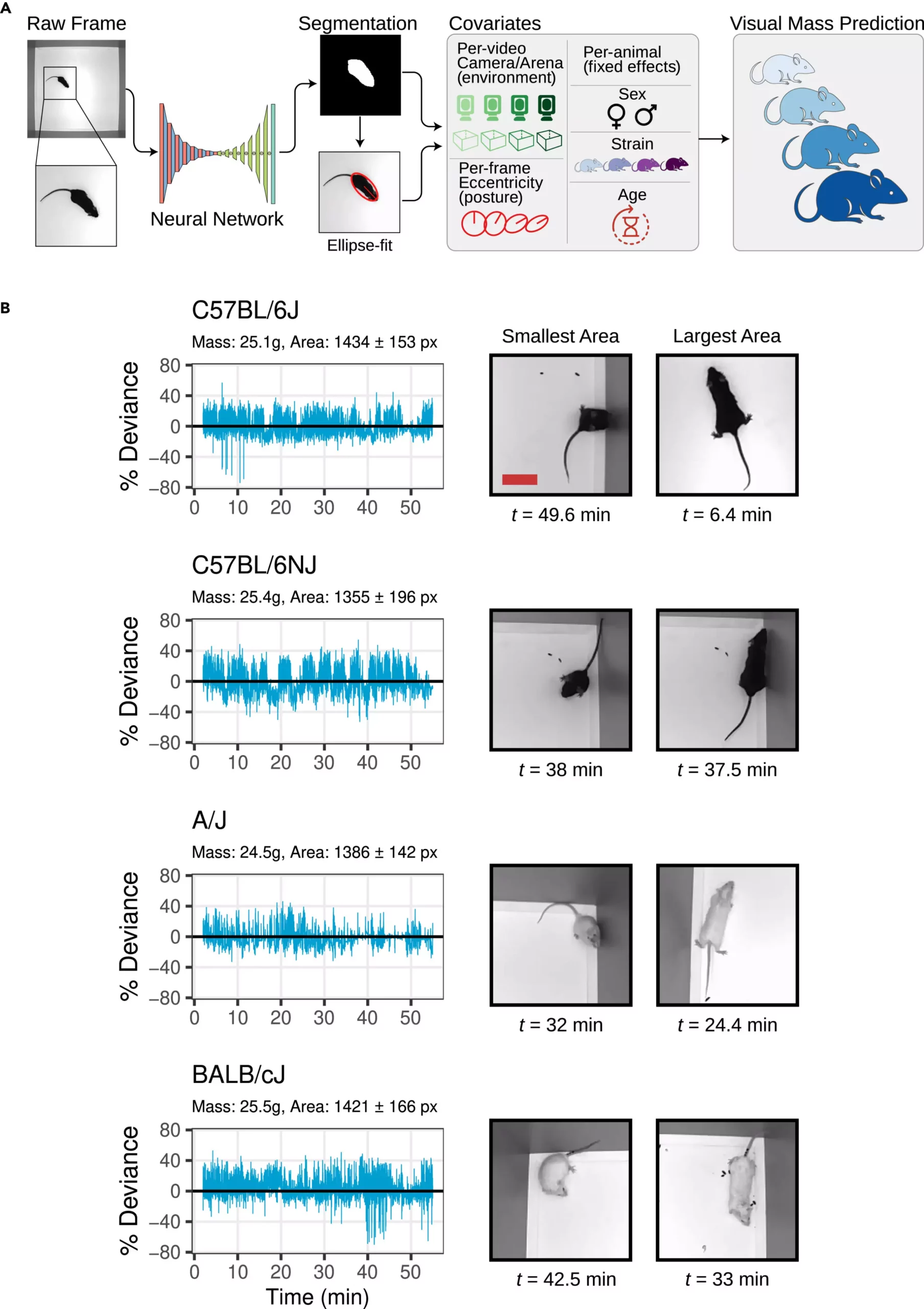The importance of accurately measuring body mass in biomedical research cannot be understated. For researchers working with mice, traditional weighing techniques can be stressful for the animals, leading to variables that may affect the outcome of experiments. This stress can also limit the frequency and reliability of measurements, impacting the validity of experimental results overall. Recognizing these challenges, a research team led by JAX Associate Professor Vivek Kumar, Ph.D., sought to develop a non-intrusive method using computer vision to accurately and continuously measure mouse body mass.
One of the main challenges faced by the research team was the dynamic nature of mice as subjects. Unlike static subjects used in other body mass measurement techniques, mice are highly active and flexible, frequently changing posture and shape. This necessitated the use of multiple visual metrics, machine learning tools, and statistical modeling to achieve the desired level of accuracy. The team also worked with 62 different mouse strains, each with unique sizes, behaviors, and coat colors, further complicating the process. Despite these challenges, the team was able to develop a method with less than 5% error in calculating body mass.
By analyzing a large mouse video dataset, the research team was able to develop a method that offers a new resource for researchers. This method allows for the detection of small but significant changes in body mass over multiple days, which could be crucial for studies involving drug or genetic manipulations. The use of computer vision technology enables researchers to continuously monitor changes in body mass without causing stress to the animals, ultimately enhancing the quality and reproducibility of preclinical studies.
The development of this new method has the potential to revolutionize the way body mass is measured in biomedical research involving mice. Not only does it offer a non-intrusive and stress-free alternative to traditional weighing techniques, but it also provides a more accurate and reliable way to continuously monitor changes in body mass over time. This method opens up new possibilities for researchers to conduct genetic and pharmacological experiments with greater precision and efficiency, ultimately advancing our understanding of health and disease.
The use of computer vision technology in measuring mouse body mass represents a significant advancement in biomedical research. By addressing the limitations of traditional weighing techniques, this new method offers a promising way to improve the quality and reproducibility of preclinical studies. The research team’s innovative approach highlights the potential of technology to enhance scientific research and accelerate advancements in the field of biomedicine.


Leave a Reply